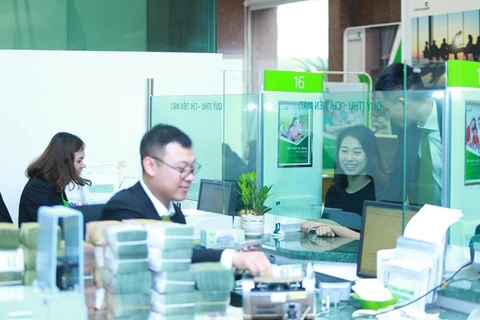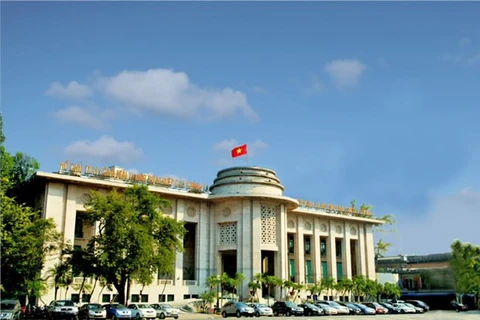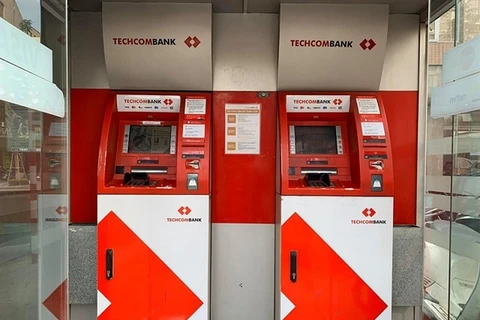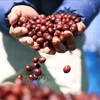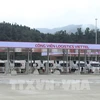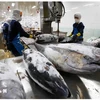 The headquarters of the State Bank of Vietnam (SBV) in Hanoi. The SBV’s monetary policy will have impacts on money supply (M2). (Photo: sbv.gov.vn)
The headquarters of the State Bank of Vietnam (SBV) in Hanoi. The SBV’s monetary policy will have impacts on money supply (M2). (Photo: sbv.gov.vn) Under the 2023 stock market outlook report released recently, KBSV said M2 was a factor that had a strong impact on the stock market movements. In the past, when M2 strongly increased, along with the low interest rates and the abundant cash flows into the stock market, the VN Index surged strongly, and vice versa.
KBSV cited the periods of 2006-2007, 2016-2017 and 2020-2021 as examples. In the periods, Vietnam’s stock market witnessed a strong development when M2 had a high increase of more than 14% thanks to a combination of many factors such as the loosened monetary policy of the State Bank of Vietnam (SBV), the high capital absorption capacity of the economy and abundant foreign capital inflows.
In contrast, the Vietnamese stock market in the periods of 2011, 2018 and 2022 saw a correction when M2 had a low growth of less than 12.5%, together with adverse internal and external factors.
Considering 2022 alone, the growth of M2 hit a record low of only 6-7%, against the average growth rate of 14% in the 2012-2021 period. The M2 slowdown was one of the important causes of the fall of the stock market.
According to KBSV, there were two reasons for the M2 slowdown in 2022. They were the SBV’s tightened monetary policy and the low disbursement rate of the government’s public investment.
Forecasting for 2023, KBSV believed that M2 will see both positive and negative impacts. As for the positive side, KBSV said the SBV will have more room to further loosen monetary policies in 2023 when the exchange rate and inflation pressure is predicted to be lower compared to 2022, when supply chain disruptions are gradually improved, the reduction in global consumption demand helps lower commodity prices, and the US Federal Reserve (Fed) is forecast to end the interest rate hike at the end of the first quarter of 2023.
Accordingly, the SBV may resume its US dollar purchase in the context of having a good dollar supply thanks to a trade surplus, rising remittances and FDI. The move will help increase the country’s foreign exchange reserves and support the liquidity of the banking system, which will contribute to lowering the savings interest rates and improving M2 growth.
Besides, the disbursement rate of public investment is expected to improve to more than 80% of the yearly plan (compared to 75% of 2022), which will help unfreeze the capital source blocked in the State Treasury to support liquidity for the economy.
However, on the contrary, KBSV said there will be still negative factors for M2 in 2023. For example, the demand for new loans of businesses and households is forecast to go down this year due to the high interest rates while business conditions are predicted to be less favourable in 2023. Despite being projected to be less stressful, liquidity of the system in 2023 is unlikely to soon return to a stable level.
Besides, the reopening of China will boost the prices of oil and gas in particular and of other global raw materials in general, which will put pressure on the prices of many other consumer goods and services, and cause global inflation to rise, making central banks around the world look to possibly maintaining tightened monetary policy for longer than expected.
In addition, risks related to the corporate bond market will be also notable as the pressure of maturity of the bonds is huge in 2023. A significant amount of credit will be used to serve the purpose of corporate bond settlement, which will cause the actual credit supply to shrink. Notably, if in a negative scenario, banks’ bad debts can increase sharply under the influence of the collapse of the corporate bond market, and banks’ lending activities are likely to be significantly narrowed, causing M2 to slow.
KBSV forecast the credit growth in 2023 will be 13-14% while the rising rate for capital mobilisation will be 12%, which will help M2 to increase to 13% from 7% in 2022. Liquidity of the banking system, accordingly, will be less stressful, enabling interest rates to cool down compared to the last quarter of 2022, despite being still at high levels.
With the high correlation of M2 and Price to Earnings ratio (P/E) of the VN Index as analysed above, KBSV said the growth of M2 in 2023 will be an important driver to help P/E of the market balance again./.
VNA

